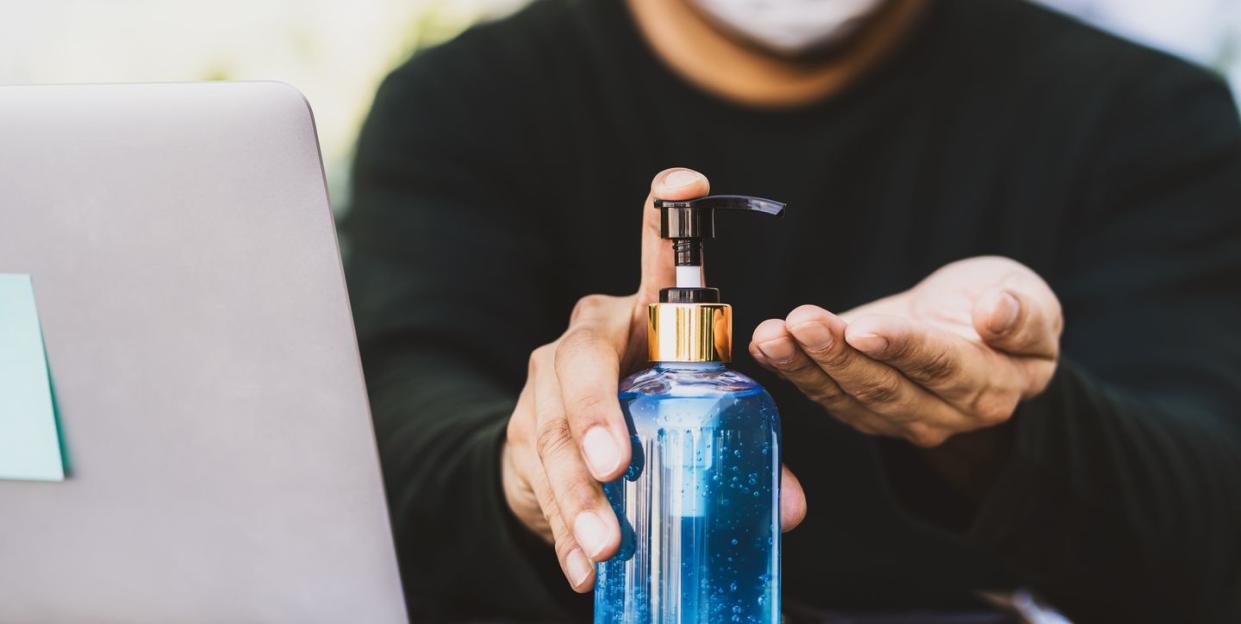Preventing COVID Is So Exhausting

You’re tired of hearing about COVID-19, tired of watching out for it. If you look at scenes of packed beaches and bars, you’d say the coronavirus pandemic is wearing thin. People are just burned out on dealing with it.
Yet during this past week, the CDC reported a record daily high of 60,000 new cases on Wednesday. If you’re tired of hearing those numbers, so are a lot of people. This time, the threat of “rising cases” doesn’t speak to you like it did back in March. It doesn’t mean you don’t care about the situation, but that you’ve burned out on it.
Why is it so hard to keep doing what we’ve been doing for so many months?
“We’re realizing that COVID-19 seems to be here to stay, and that’s a tough burden,” says Doug Misquitta, MD, a psychiatrist with The Ohio State University Wexner Medical Center. Initially, many governors said that stay-at-home orders would last two weeks. Maybe three. That stretched into three months in many places in the country. It’s like you prepared to run a 5K but you got to the start of the race to find out you’d signed up for a 100-mile ultramarathon at night through the woods. Your endurance for the pandemic has burned out, especially if your usual coping strategies—seeing friends and family in person, working out in the gym or on certain trails—weren’t available.
So it makes sense that you hit a tipping point where—boom—there’s this restlessness. You want to do things you haven’t been able to do and you want to stop the perma-vigilance. Essentially, there’s only so much energy you have to spend on constant caution, and you’re not sure you’re able to renew it. “There have been months of being cooped up, so you’re almost in a caged-tiger mentality,” Dr. Misquitta says.
A lot has been piling up to get us to this point of caution fatigue. People are tired of public health recommendations, especially ones they perceive to be uncomfortable. And in some instances, permission to be “over” the pandemic runs along political lines. On top of it, there are mixed messages: Some are about how important it is to open up, others are expressing serious concern about the pace of reopening and its health impacts. So people are left to themselves to decide which to go with. And, as Tess Wilkinson-Ryan recently pointed out in The Atlantic, in situations like these that require a certain type of risk calculation, people often tend to be swayed more by the recommendation that benefits them more.
This kind of coronavirus burnout—COVID-caution fatigue—can also especially set in if you don’t know anyone who had COVID-19 or if nothing bad happened to them if they did. Recently, people were feeling pretty good about declining cases (until, you know, these past couple of weeks). “The more successful we are and the less disease we see that touches us individually, the more vigilance fatigue crops up,” says Mercedes Carnethon, PhD, vice chair of preventive medicine and an epidemiologist at Northwestern University Feinberg School of Medicine in Chicago. Meaning that you’ve been waiting for something bad to happen, and when nothing does, you see all that waiting not as the reason for success but a cue that it’s time to get back to normal. You didn’t see the enemy and didn’t get scared.
How to Stay Safe Without Getting Burned Out On It
The question becomes how can you cautiously find a way to move forward and live with COVID-19, but in a way that doesn’t involve burnout, says Carnethon. “It’s a balance,” she says. And you can help yourself manage vigilance fatigue and keep good health going with these strategies:
Recognize that all this COVID caution is still worth doing.
Being a healthy guy who does HIIT and eats well doesn’t really get you off the hook for continuing to be cautious now. “My message to healthy men is: If you contract it, you’ll probably be okay unless you’re not. There are enough stories on the internet about men who ran marathons and died of COVID-19,” says Carnethon. Recent data, she says, shows infection rates are roughly equal among men and women but men are more likely to die of the disease.
Simplify things.
It’s easy to get in the weeds of the rules and what you should or shouldn’t be doing or are allowed to do. Or about things like exactly what thread count mask you should be wearing. Best to focus on the big picture—the thread count of the mask may not matter as much as what you’re doing in that mask and for how long and how you handle the mask. There’s guidance on the big picture, and you know what it is: continue physically distancing, keeping gatherings small, and wearing a mask in public and other social settings.
Stop feeling so stuck.
“We want everyone to be healthy. You should be doing the things you love to do and the things you need to do to take care of yourself,” says Dr. Misquitta. It becomes about compromise right now—having drinks on a patio instead of going to a bar, heading to a park to exercise, having a small group of friends over instead of a Saturday night blowout. Make data-driven decisions rather than fear-based ones, and you can glide into a new normal that doesn’t feel so bad.
You Might Also Like

